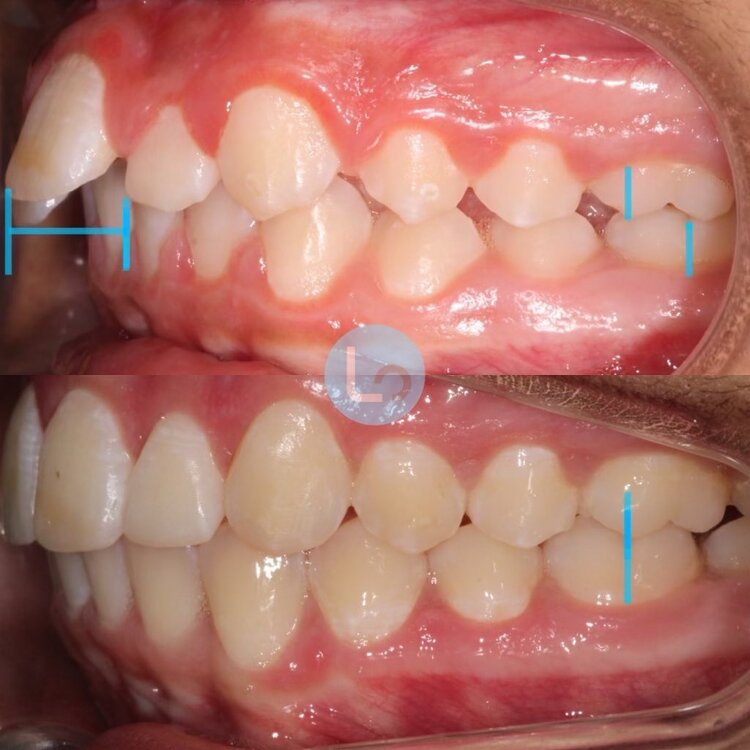Legacy Orthodontics Things To Know Before You Get This
Legacy Orthodontics Things To Know Before You Get This
Blog Article
Top Guidelines Of Legacy Orthodontics
Table of ContentsExamine This Report about Legacy OrthodonticsSee This Report about Legacy OrthodonticsGetting My Legacy Orthodontics To WorkThe 20-Second Trick For Legacy OrthodonticsLegacy Orthodontics Fundamentals Explained
At Advanced Orthodontics, we give individuals with a all natural therapy experience. Additionally, we provide flexible treatment routines, versatile settlement choices and an enjoyable, pleasurable experience. leesburg braces. Telephone call ( 480) 357-4900 today for additional information and schedule an appointment.An orthodontist is a dentist educated to detect, avoid, and deal with teeth and jaw abnormalities. Orthodontists function with individuals of all ages, from children to grownups.
Malocclusion, or misaligned teeth, can result in dental concerns, consisting of tooth decay, periodontal illness, and tough or unpleasant chewing. Not everybody is born with straight teeth. If you have a poor bite or huge areas between your teeth, you might desire to get in touch with a dental expert focusing on orthodontic treatment.
Legacy Orthodontics Can Be Fun For Everyone
( Image Credit: DigitalVision/Getty Images) Orthodontists utilize fixed and detachable oral devices, like braces, retainers, and bands, to alter the position of teeth in your mouth. Orthodontic treatment is for oral problems, including: Misaligned teethBite troubles, like an overbite or an underbiteCrowded teeth or teeth that are also far apartJaw misalignmentThe goal of orthodontic therapy is to enhance your bite.
A healthy bite ensures you can eat, eat, and talk effectively. While you may believe of orthodontists as mostly for children or young adults who need dental braces, they can correct dental problems at any type of age. Orthodontists go to college, oral school, and orthodontic college. After graduation, they spend 2 or 3 years in an orthodontic residency program.
All orthodontists are dental experts, but not all dental experts are orthodontists. Orthodontic residency programs supply extensive, focused direction for oral experts. They focus on 2 locations: How to effectively and safely relocate teeth Exactly how to properly direct development in the teeth, jaw, and faceOnce an orthodontist has actually completed training, they have the option to come to be board licensed.
Legacy Orthodontics - Truths
Imbalance, or malocclusion, is one of the most common reason people see an orthodontist. It is genetic and is the result of dimension differences in between the top and lower jaw or in between the jaw and teeth. Malocclusion brings about tooth overcrowding, a misshapen jaw, or uneven bite patterns. Malocclusion is typically treated with: Your orthodontist attaches metal, ceramic, or plastic square bonds to your teeth.
If you have just minor malocclusion, you may be able to utilize clear dental braces, called aligners, rather of traditional dental braces (https://hearthis.at/legacyortho/set/legacy-orthodontics/). Some individuals need a headgear to aid relocate teeth right into line with stress from outside the mouth. After dental braces or aligners, you'll need to wear a retainer. A retainer is a customized gadget that maintains your teeth in location.
They can create extra space in the mouth without having to draw teeth. Orthodontists use cords, medical screws, or plates to sustain your jaw bone.
You might need to see an orthodontist if you have: Crowding or not sufficient room for every one of your teethOverbite, when your upper teeth come over your base teethUnderbite, when your bottom teeth are as well much forwardSpacing or concerns with gapsCrossbite, which is when your upper teeth fit behind your bottom teeth when your mouth is closedOpen bite or a vertical space between your front base and upper teethMisplaced midline, when the center of your base and upper teeth do not align Dealing with a dental malocclusion can: Make biting, chewing, and speaking easierImprove the proportion of our face and your general appearanceEase discomfort from temporomandibular joint problemsDifferent your teeth and make them easier to clean up, assisting prevent dental cavity or cavities It's typically blog here a dental practitioner that first notices misaligned teeth during a routine examination.
Some Known Incorrect Statements About Legacy Orthodontics

During your first orthodontic examination, you'll likely have: A dental examPhotos taken of your face and smileDental X-raysPanoramic (360 degree) X-rays of your face and headImpressions to develop mold and mildews of your teethThese tests will certainly help your orthodontist know just how to wage your treatment. leesburg braces. An orthodontist is a dental expert that's had training to treat your teeth and jaw
Orthodontists might carry out surgery, exams,X-rays,and even more to aid you attain a more comfy, much healthier smile. An orthodontist is focused on your bite, so something like a cracked tooth would certainly be handled by a dental expert. Orthodontists are dental professionals however not all dental experts are orthodontists. Orthodontists are focused on your bite, or the means your teeth fit with each other, and the straightness of your teeth.
Ever before wondered how celebs constantly seem to have completely aligned teeth? Orthodontists are oral experts that focus on dealing with irregularities in the teeth and jaws.
Legacy Orthodontics Fundamentals Explained

, orthodontists have a varied toolkit at their disposal. These tried-and-true braces make use of a system of brackets adhered to the teeth and attached by wires.
These detachable trays are tailor-made to considerably shift the teeth's placement. In instances of narrow jaws, palatal expanders can be utilized to create space for appropriate tooth positioning.
Report this page